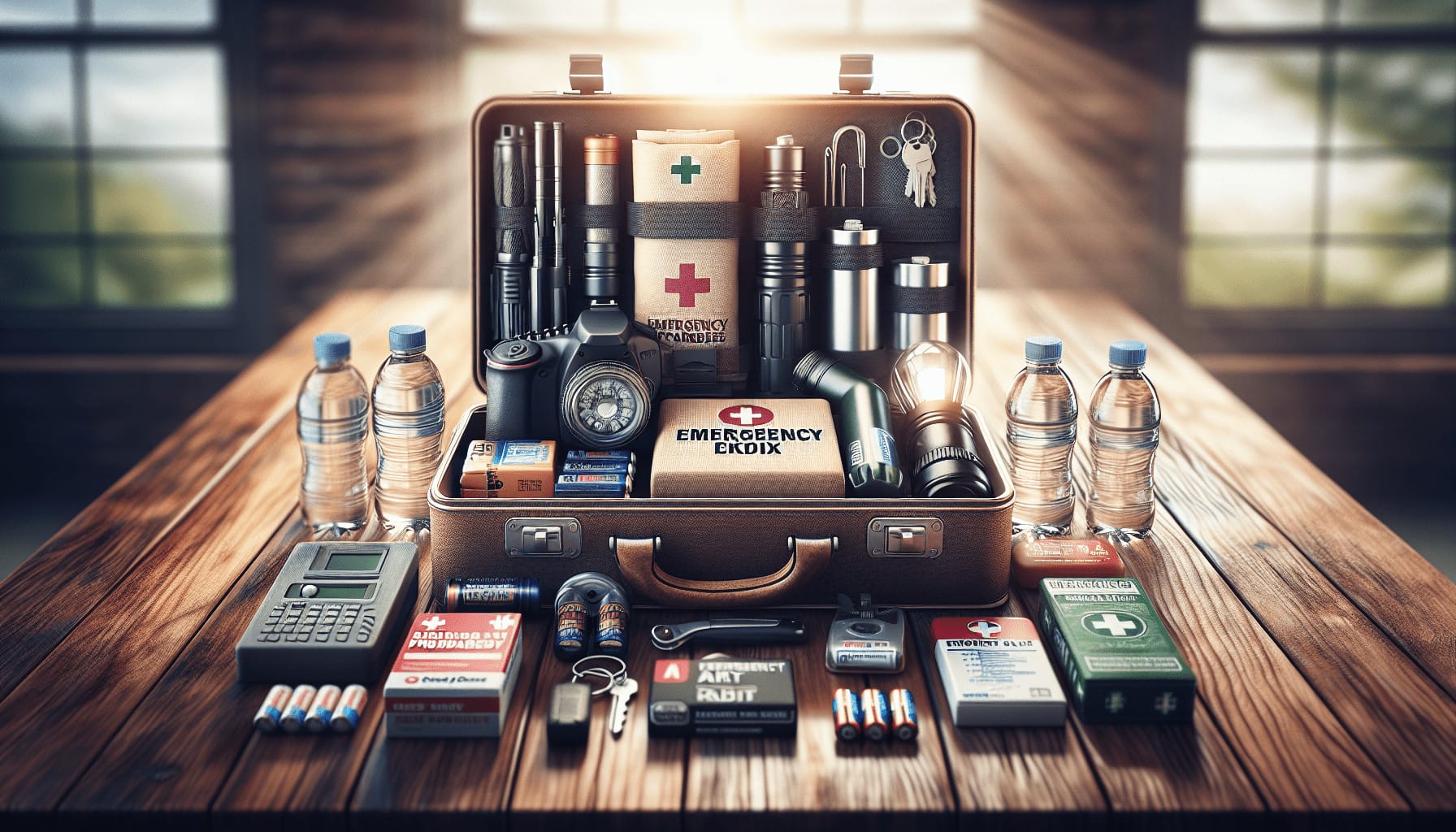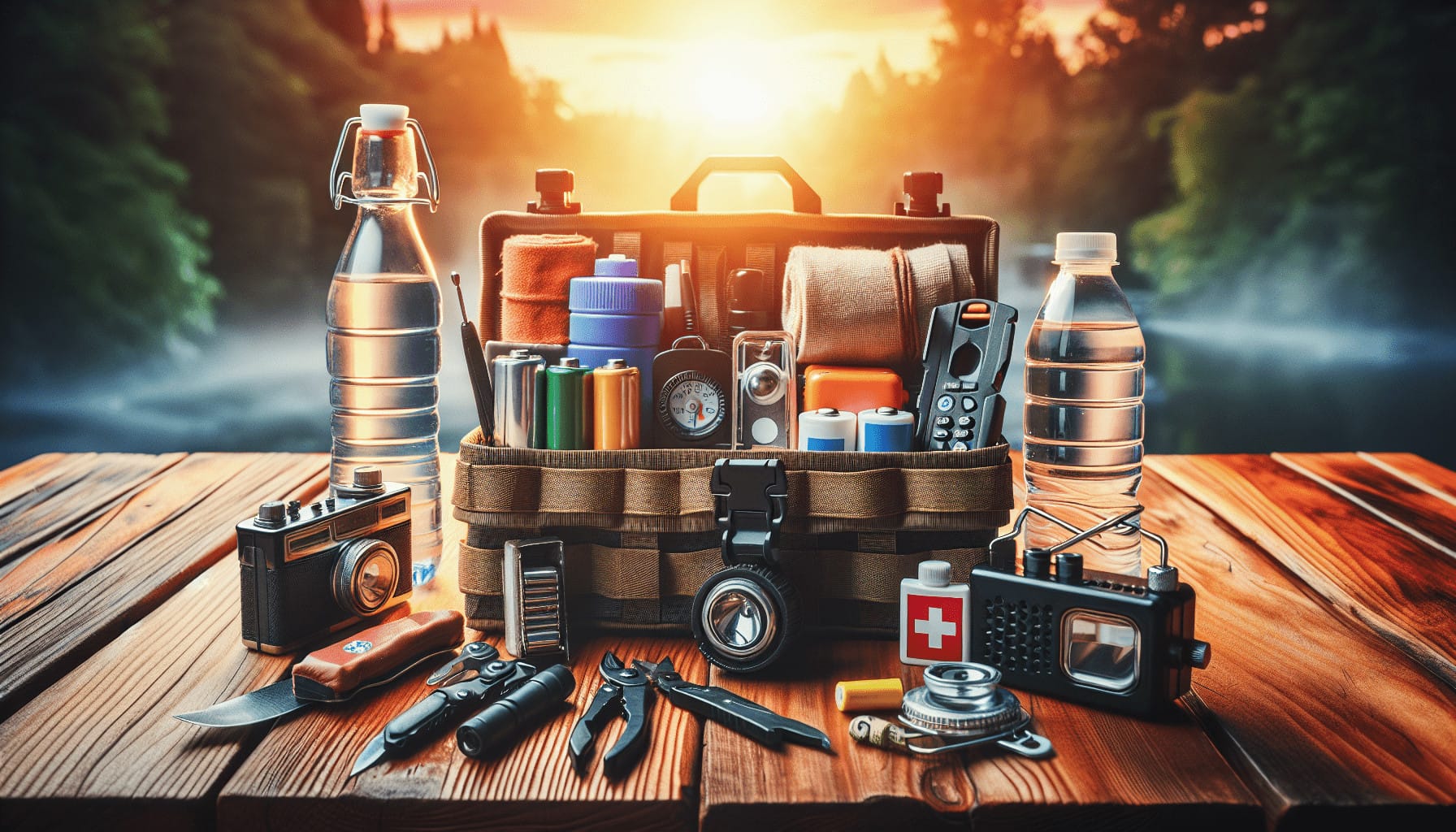Have you ever wondered if you are truly prepared for an emergency? It seems logical to think we all have it under control, but considering how unpredictable life can be, it’s crucial to ensure you’re truly ready for any surprises. Prioritizing your emergency preparedness tasks will not only help you manage potential crises more effectively but can also provide peace of mind. Together, let’s explore some top ways to get better organized and ready to face unforeseen challenges with confidence.
Understanding Why Emergency Preparedness Matters
In life, unexpected situations are common, ranging from natural disasters to personal emergencies. These events can significantly impact your daily life, health, and safety. Being prepared helps you minimize risks and ensures that you and your loved ones are safe and secure. The importance of emergency preparedness cannot be overstated; it’s the difference between calm and chaos when disaster strikes.
What is Emergency Preparedness?
Emergency preparedness refers to the actions and plans that are in place to handle potential emergencies. This includes assessing risks, developing response strategies, and ensuring you have the necessary supplies and knowledge. Whether it’s a power outage, earthquake, or even a medical emergency, having a clear plan can reduce stress and anxiety during challenging situations.
Why Prioritize Emergency Preparedness?
Setting priorities in preparedness allows you to focus on essential tasks, ensuring that the most crucial items are addressed first. When you prioritize effectively, you reduce the chances of overlooking critical steps. It also helps you allocate resources efficiently, so you’re well-equipped to respond swiftly and effectively when needed.
Assessing Risks and Developing a Plan
Identifying potential risks is a foundational step in emergency preparedness. You can’t prepare for every possible scenario, but you can identify the most likely events in your area or situation and plan accordingly.
Conduct a Risk Assessment
Start by evaluating the types of emergencies that are most likely to occur where you live. Is your area prone to hurricanes, earthquakes, or floods? Maybe you live in a region with severe winters or frequent storms. Understanding local threats will guide your preparedness efforts.
Develop a Comprehensive Emergency Plan
Once you’ve identified potential risks, the next step is to develop a plan. This plan should include communication strategies, emergency contacts, and evacuation routes. Ensure every family member knows their role and responsibilities. Consider creating a written document that’s easily accessible to everyone in your household.

Creating an Emergency Supplies Kit
An emergency supplies kit is essential in every household. It acts as a lifeline during emergencies, providing essential items like food, water, and medical supplies. Let’s break down how to put together a robust emergency kit that covers all the bases.
Essentials for Your Supplies Kit
Your emergency kit should be stocked with basic items that will sustain you and your family for at least 72 hours. Here’s a list of crucial items to consider:
| Item | Purpose |
|---|---|
| Water | At least one gallon per person per day |
| Non-perishable food | Enough for three days per person |
| First aid kit | Basic medical supplies and medications |
| Flashlight and batteries | Lighting during power outages |
| Multi-tool | Various uses, including can opening |
| Blankets | Staying warm during cold conditions |
| Personal hygiene items | Maintain cleanliness and health |
Tailoring Your Supplies for Personal Needs
Remember, your emergency kit should cater to the unique needs of your household. If there are infants, elderly family members, or pets, their requirements should also be considered. Customize your kit with any necessary medications, baby formula, or pet food.
Establishing a Communication Plan
In emergencies, staying connected with family members and first responders is crucial. Having a well-thought-out communication plan ensures everyone knows how to reach each other and what to do if separated.
Choosing Reliable Communication Methods
Cell phones are typically the go-to devices for communication, but they’re not failproof. Consider alternatives like radios or satellite phones, especially if you’re in an area prone to network interruptions. Ensure all devices are charged and have backup power options.
Sharing Essential Information
Make sure all family members have each other’s phone numbers, emergency contacts, and any other vital information. Consider creating a contact card that everyone can carry. Establish a designated meeting point in case you’re separated.

Practicing Preparedness
Emergency plans are only effective if all involved parties are familiar with them. Practicing your preparedness plan ensures everyone knows what to do during a real emergency, reducing panic and confusion.
Conducting Drills and Simulations
Regularly schedule drills or simulations of various emergency scenarios. Whether it’s a fire drill or a mock evacuation, these practices will help reinforce the steps everyone must take. Adjust and improve your plans based on any issues encountered during these drills.
Family and Community Involvement
Encourage your family and even your community to participate in preparedness training. The more involved everyone is, the better prepared they’ll be. Consider joining local preparedness workshops or groups to gain additional knowledge and resources.
Staying Informed and Adaptable
The ability to adapt to new information and situations is a crucial component of emergency preparedness. Keep yourself updated on potential threats and ensure your plans evolve as needed.
Monitoring News and Alerts
Stay informed by subscribing to weather alerts and public safety notifications. This will allow you to receive timely information about potential threats and respond accordingly.
Updating Your Plans Regularly
As your family grows or your circumstances change, your emergency plans may also need updates. Review and revise your plans and kits annually to ensure they remain relevant and effective.
Financial Preparedness
In some emergencies, having quick access to financial resources is essential. From evacuation costs to temporary accommodations, being financially prepared can save stress and uncertainty.
Setting Up an Emergency Fund
Establishing an emergency fund can help cover unexpected expenses that arise during a crisis. Aim to save enough to cover three to six months of living expenses, stored safely in an easily accessible savings account.
Documenting Important Financial Information
Keep copies of critical financial documents, such as insurance policies, bank account details, and identification documents. In an emergency, having this information readily available can expedite recovery processes.
Conclusion
Being prepared for emergencies goes beyond just having a plan; it requires ongoing attention, adaptation, and involvement from everyone in your household. By prioritizing tasks based on your specific needs and risks, you’ll enhance your ability to effectively respond to any unforeseen events. So, take these actionable steps seriously and stay proactive—after all, it’s not just about survival; it’s about ensuring the safety and welfare of those you love.
